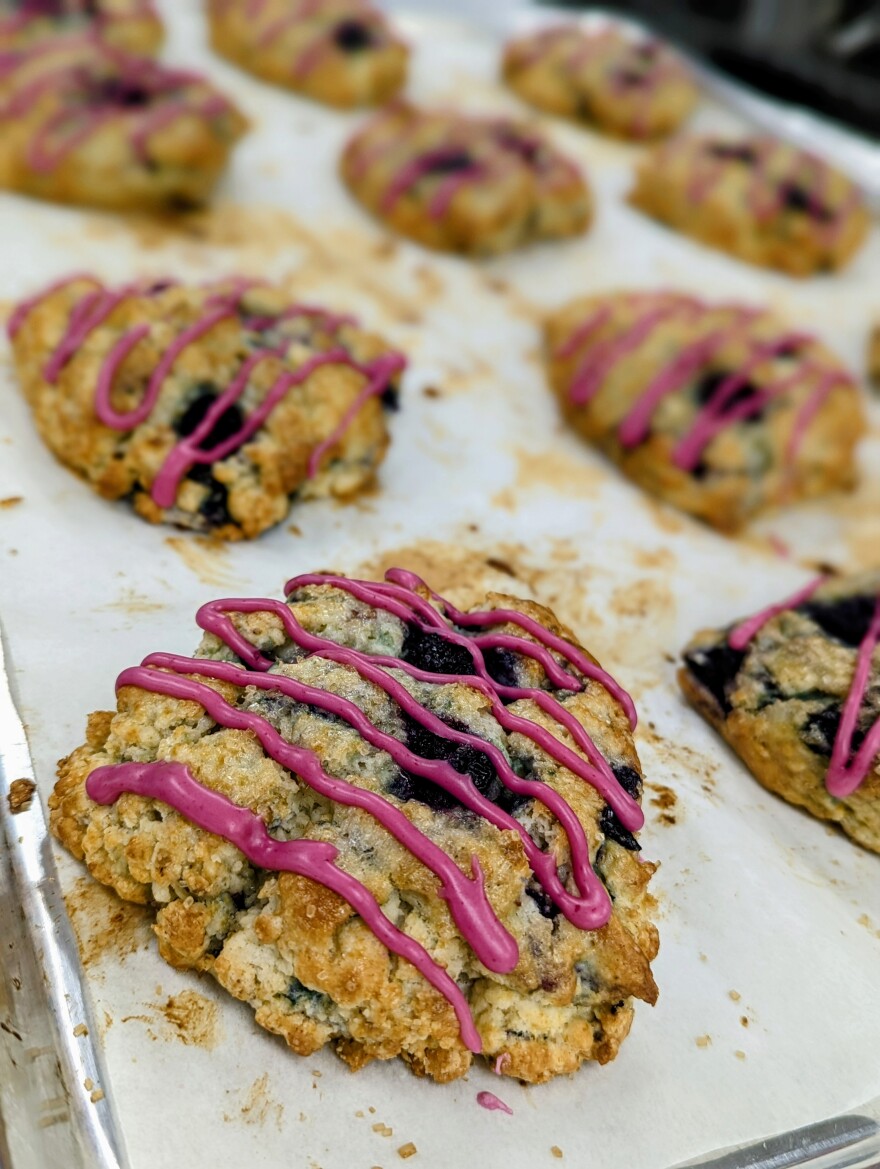In the past, Fort Collins baker Elizabeth Meyers used synthetic dyes to match colors for weddings and birthday parties. But it felt strange to her.
“There's just a lot of beautiful colors in nature, and it seems weird to me to want to make food a color that the food isn't normally,” Meyers said.
Get top headlines and �ʹ���ַ reporting directly to your mailbox each week when you subscribe to In The NoCo.
Now, Meyers rarely uses dyes at her wholesale shop, . If she does, she said the dyes are not artificial or filled with preservatives – they’re usually derived straight from berries.
But those natural dyes can be expensive and difficult to make. They can change with the heat. And they’re not a one-to-one exchange.
“You have to use more dye, and even if you do, you might not get the color that you would get if you were just cracking open one of the many, many synthetic variations that are out there,” she said.

That’s the current challenge for many bakeries in Northern Colorado, as the U.S. Food and Drug Administration and the Department of Health and Human Services plan to . The goal is to approve four natural dyes in the coming weeks and review more for the future.
Meyers has mixed feelings about it all. She doesn’t want the ban to ruin small businesses that have relied on their dye recipes for years and are already tight on budgets.
But she understands the health concerns. She was diagnosed with breast cancer and has been in remission for eight years. She wants to make sure that the pastries she’s serving are made of ingredients anyone could find in their pantry – not a laboratory.

“There's a lot of things out in the world that we don't have control over our exposure to,” she said. “There's just a lot of ways for, you know, weird chemicals to make their way to us. And I don't want food to be one of those ways.”
Right now, there are six synthetic dyes allowed in foods. Earlier this year, one dye – Red No. 3 – in foods and drugs starting in 2027, as it was found to contribute to cancer in rats.
“There hasn't been a lot of research focused on the (synthetic dyes), even though they have become an integral part of processed and ultra processed foods,” Alyson Mitchell, a professor and food chemist at the University of California-Davis, said.
Mitchell and other researchers looked into several publications about synthetic dyes and did a study in 2021. They concluded that the dyes exacerbated behavioral difficulties and decreased attention in some children. She thinks changes in behavior and food intake are a factor.
“We're exposing children to far more (synthetic) food dye, and it's not just at one meal, it's throughout the day. It's all day long,” she said. “And it's not just one food dye, it is, you know, now six food dyes, and nobody's ever studied the impact of multiple exposures of all six dyes over time.”
But natural dyes do not always imply “safe”, Mitchell said. They’re under-researched, and they are. And in order to achieve certain colors, more of the extract may need to be used, increasing the concentration in a food.
Mitchell is sympathetic to small bakeries that are faced with getting the right colors for cakes and pastries, but she wishes that bakeries were the only place people would be exposed to the dyes – not the whole industry.
“If we had just left these colorants out of all these other foods and people were only getting exposed to them on special occasions, like in a birthday cake or something along those lines, I don't think there would be the issue that we are faced with today,” she said.
At the end of the day, Mitchell hopes that customers will change their mindset of how they perceive food and think about what they’re eating before they take a bite. Meyers agrees.
“Everyone's heard ‘You eat with your eyes,’ and it's very true,” Meyers said. “But I guess in my brain, when I see something that is obviously unnaturally colored that doesn't trigger a response of, ‘Oh, I want to eat that.’”
in Fort Collins said in an email that they will continue doing their best and adapt if their supplier is unable to provide natural options. �ʹ���ַ reached out to several bakeries in the area, but at the time of this story did not receive a response regarding how other bakeries plan to address the changes.






